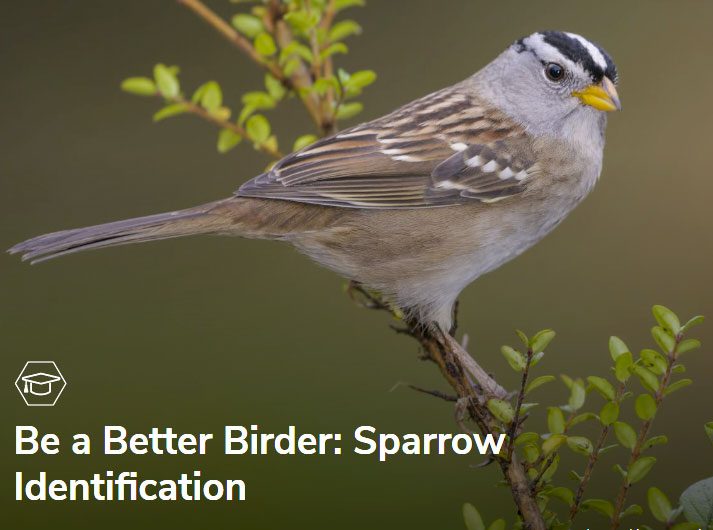Learn How to ID These 5 Confusing Streaked Sparrows
By Marc Devokaitis
Who's this bathing beauty? Check your answer. Photo by Nick Saunders/Macaulay Library. October 8, 2019From the Autumn 2019 issue of Living Bird magazine. Subscribe now.
Some lurk unseen in prairies, some trill from perches in arid scrublands, and some are a familiar sight in backyards. But no matter where sparrows are found, separating one from another can seem like a tough task.
“Sparrows are hard! Identifying any sparrow is something to be proud of,” says Kevin McGowan, author and instructor of the new Sparrow Identification course from the Cornell Lab of Ornithology’s online Bird Academy. “There is no magic bullet for sparrow identification. You have to be ready to use everything in your bird identification toolkit, and you have to learn it sparrow by sparrow.”
There are 43 species of New World sparrows commonly found in the United States and Canada (the family, Passerellidae, includes towhees, juncos, and the Lark Bunting). Most birds with “sparrow” in their English name are small and brown. Many have streaked backs; all have conical bills perfect for husking seeds. Bright colors and bold patterns are rare, which is why this group can seem mystifying.
Sparrows come in a diversity of elegant (albeit subtle) plumages, they show off a variety of unique behaviors, and they typically sing very distinct songs. So figuring out a sparrow species ID can be a fun and challenging puzzle of putting together the right field identification clues, including Size & Shape, Color Pattern, Behavior, Habitat, Field Marks, range, and calls.
Here is a quick collection of tips and tricks, courtesy of Dr. McGowan, for identifying five of the most common, but potentially most confusing, sparrow species.
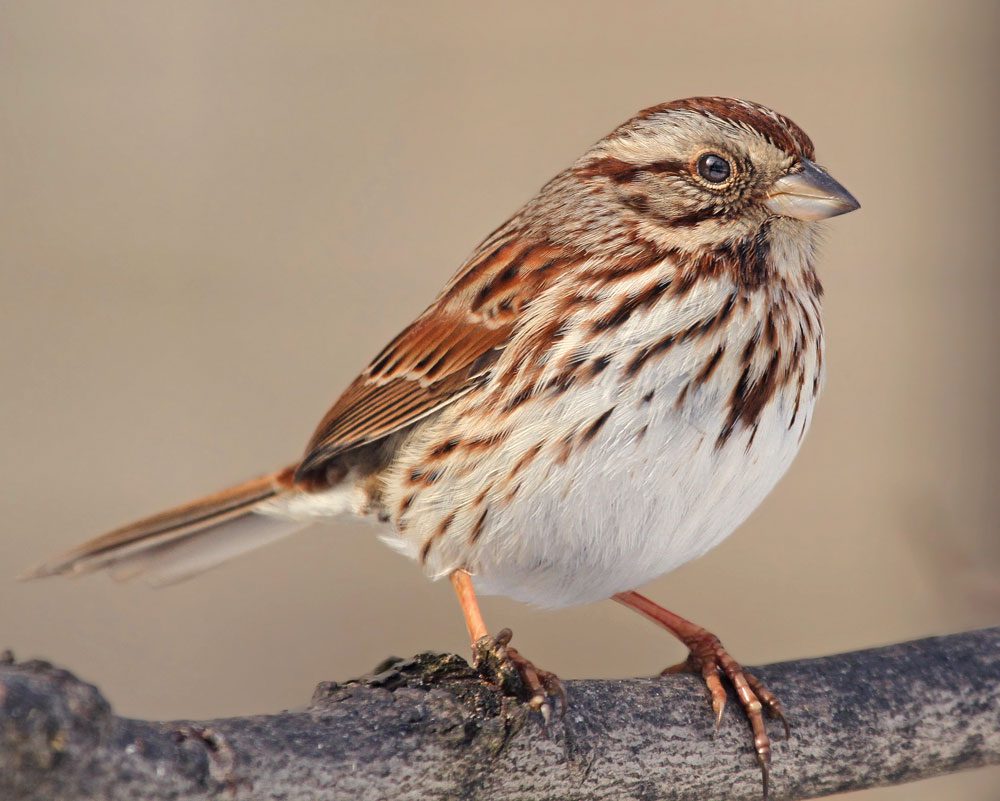
Song Sparrow
This bird lives up to its name. Its distinct song usually starts with several clear notes followed by buzzes, trills, or other complex notes, and it tends to sing frequently in the spring and early summer. Because it’s common in backyards, the Song Sparrow is a great starter species for birders to learn field marks in detail, which can be helpful for comparing and contrasting with other sparrow species.
Compared to other sparrows, the Song Sparrow is medium-sized and long-tailed. The brown streaks on its chest look painted on, and they usually come together in a big splotch in the center. This species also has two triangular brown stripes on either side of its throat, a whitish or grayish eyebrow, and a thin dark line behind the eye.
Be aware that Song Sparrows show a tremendous amount of variation across their range—so find out more about Song Sparrows in the All About Birds species guide.
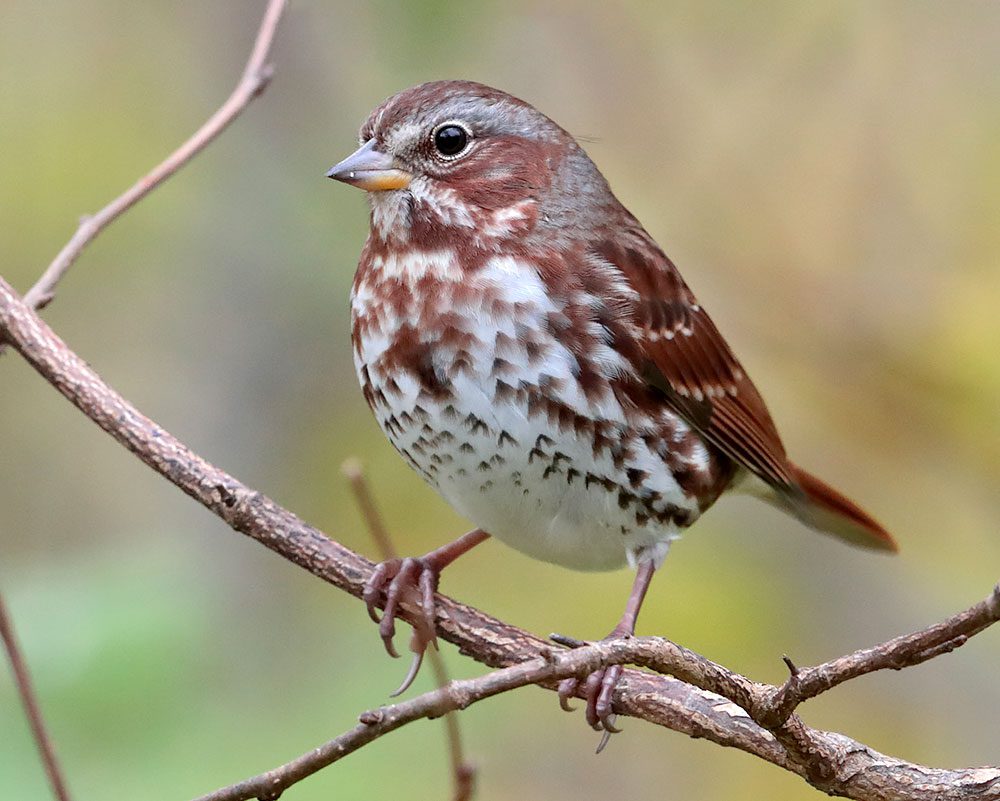
Fox Sparrow
Unlike the Song Sparrow, which breeds across much of the eastern and western U.S., the Fox Sparrow breeds farther north, in the scrubby boreal forest, or in shrubby mountain habitats. Most birders see it on migration or in the winter, when it uses more varied habitats and sometimes shows up beneath bird feeders.
When feeding, the Fox Sparrow uses a “double-scratch” technique, hopping quickly forward and backward to uncover food among ground vegetation and leaf litter.
Like the Song Sparrow, it has streaks on its chest and sides, but the streaks are thicker and blurrier, as if drawn with a kindergartner’s crayon instead of a paintbrush. The Fox Sparrow’s song is a series of clear musical notes and sliding whistles.
Fox Sparrows also vary in appearance across their range, with 5 distinctive-looking forms in North America. Find out more about Fox Sparrows in the All About Birds species guide.
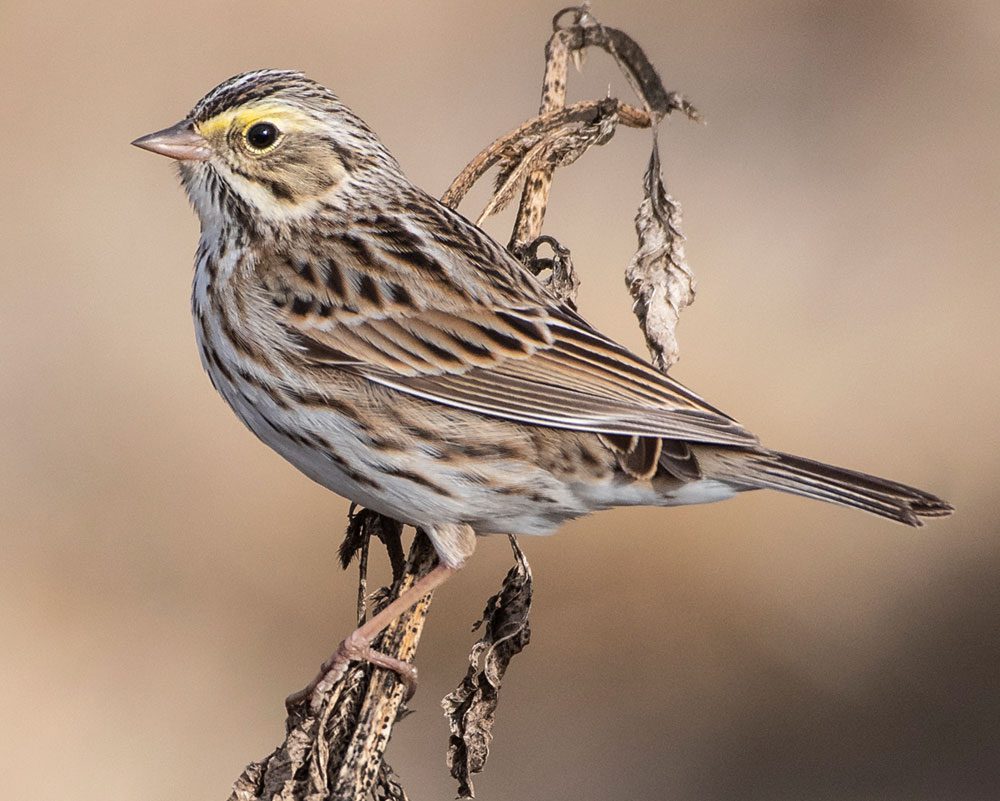
Savannah Sparrow
The Savannah Sparrow is found in various grassy habitats in much of North America.
It’s about the same size as a Song Sparrow, with a slightly shorter tail that’s notched, not rounded. A close look at a Savannah Sparrow’s face usually reveals a wash of yellow color in front of the eyes, and sometimes above and behind them as well—but the richness and extent of this marking is highly variable.
When a Savannah Sparrow is flushed, it tends to fly up to a perch and face its pursuer as it lands, distinguishing itself from LeConte’s Sparrow and Grasshopper Sparrow, which tend to dive into the grass head-first.
Its song is thinner and more insectlike than those of the other sparrows in this article, consisting of several short notes followed by a longer, high-pitched buzzy note, and ending with a shorter buzz.
Find out more about Savannah Sparrows in the All About Birds species guide.
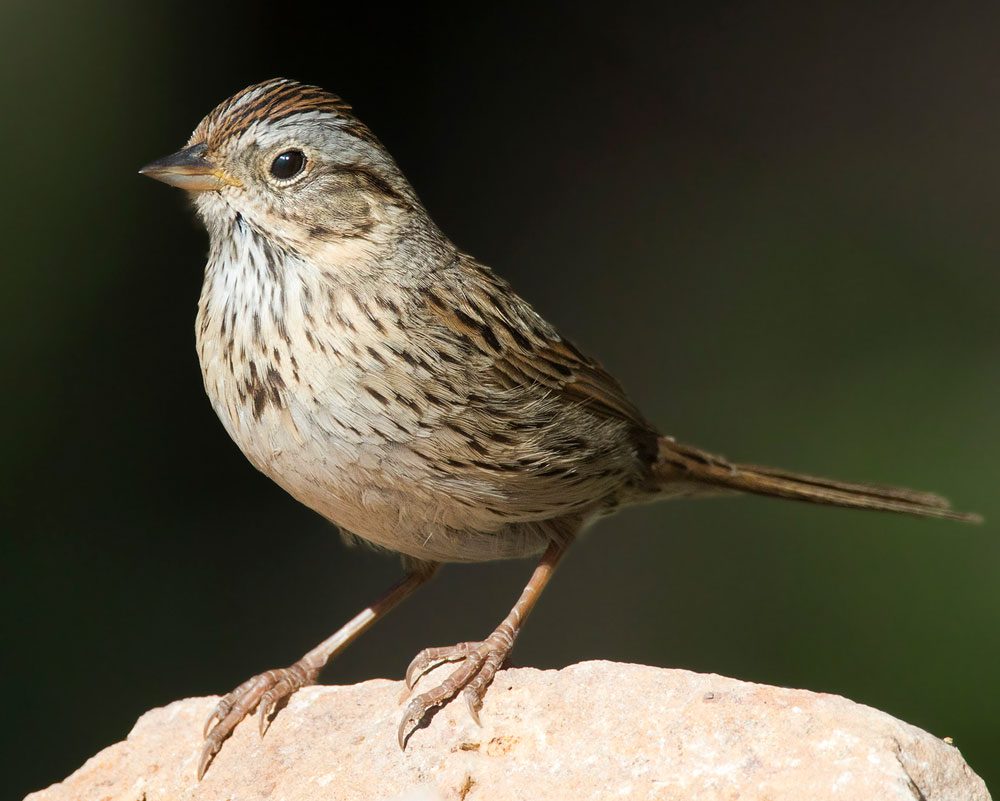
Lincoln’s Sparrow
If a Song Sparrow’s markings are drawn on with a regular paintbrush, a Lincoln’s are put on with a fine pencil. Everything is fine, sharp, and crisp. It’s a subtly beautiful sparrow if you can get a good look at it. A contrasting buffy color on the chest and on the sides of the throat also set this sparrow apart from the other widespread, streaked sparrows.
Lincoln’s Sparrow breeds in boggy areas in boreal forest and mountains. But like many sparrows it uses a variety of habitats on migration and winters across the southern U.S. and the West Coast. It can be hard to see as it is apt to skulk in dense vegetation.
Lincoln’s Sparrow has one of the most musical songs of any sparrow, a rich, wrenlike cascade of trills, gurgles, and buzzes.
Find out more about Lincoln’s Sparrows in the All About Birds species guide.
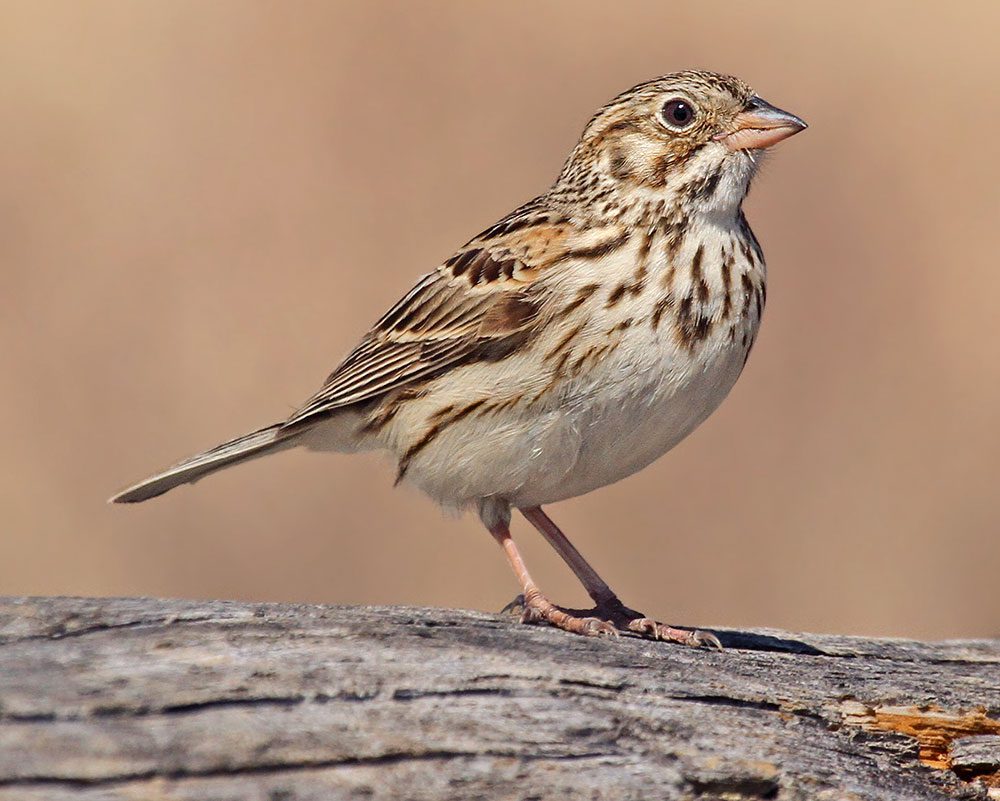
Vesper Sparrow
The Vesper Sparrow is found in a variety of grasslands and fields across much of the United States and Canada, as a breeder in the north, and in migration or in winter farther south. As its name suggests, it often sings in the evening twilight (though it sings in the early morning as well). Its distinct song starts with two clear, downslurred notes followed by a series of musical trills and whistles.
Also distinctive is its complete white eyering—no other widespread, streak-breasted sparrow has this facial feature. In flight, look for a long tail with white outer tailfeathers (similar to a junco).
If you are looking in agricultural areas for this species, look for corn. This is one of the few sparrows that uses growing cornfields in the summer (not just the postharvest stubble in the fall).
Find out more about Vesper Sparrows in the All About Birds species guide.
Ready To Get To Know Your Sparrows?
Check out our new Bird Academy course: Be a Better Birder: Sparrow Identification. This self-paced online course covers 49 species of North American sparrows and is designed for intermediate to advanced birders.

All About Birds
is a free resource
Available for everyone,
funded by donors like you
American Kestrel by Blair Dudeck / Macaulay Library




